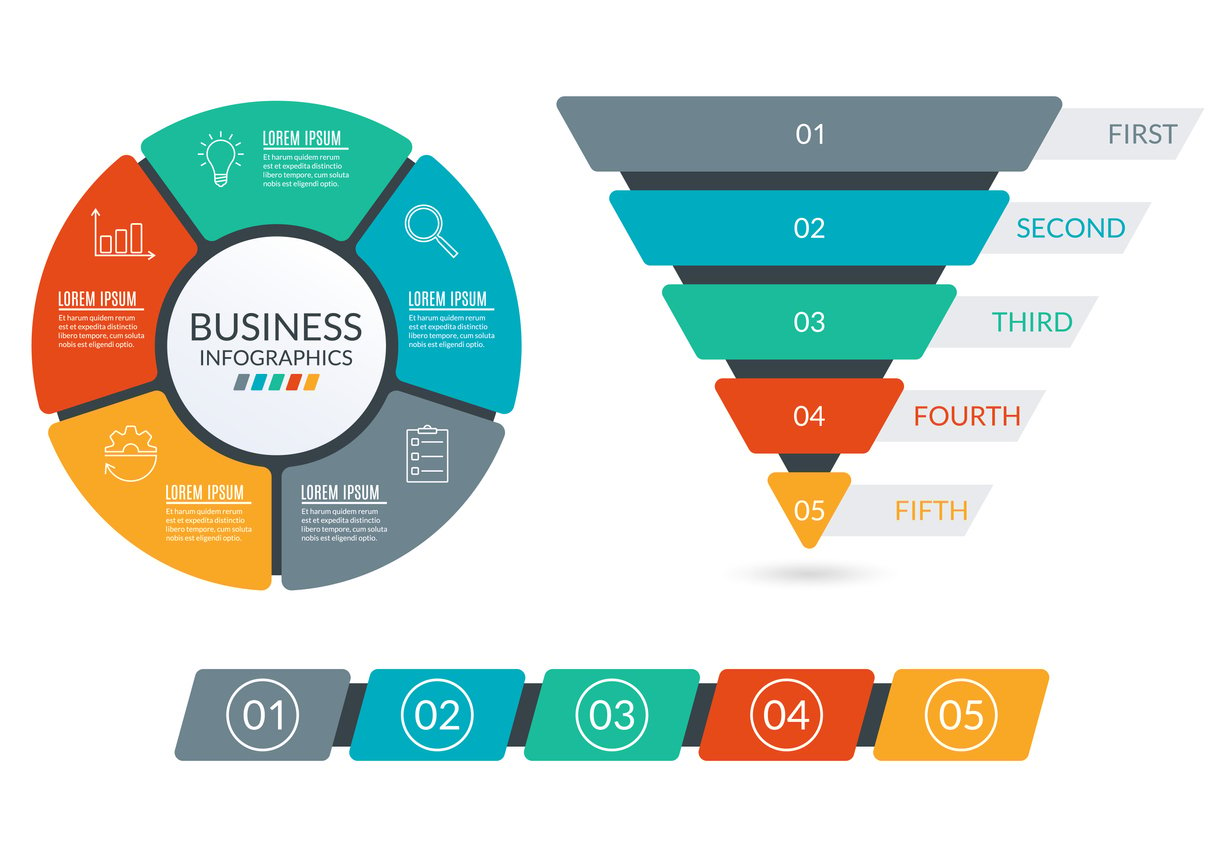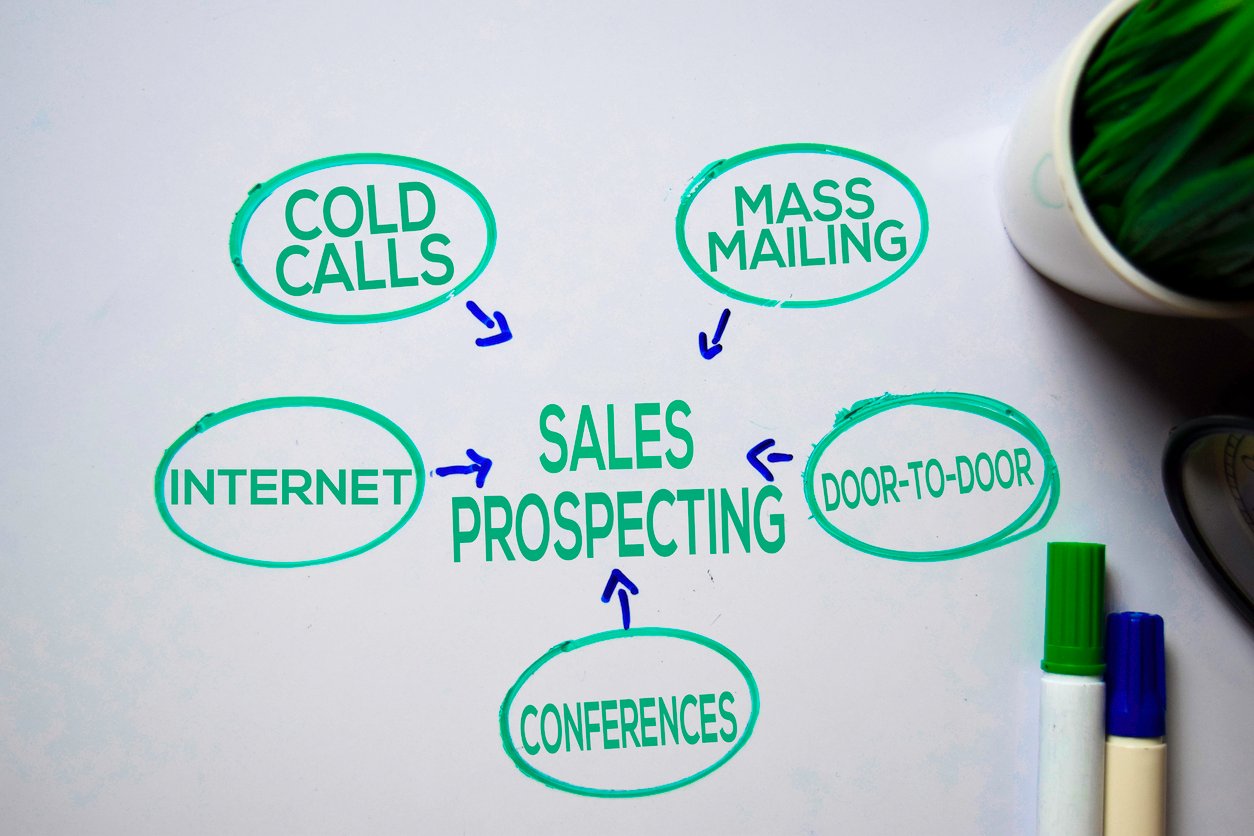
Creating an Effective Sales Playbook: Strategies and Implementation
 Updated on
Updated on
 By Carlos Correa
By Carlos Correa
Carlos Correa
Carlos has been involved in the sales space for well over ten years. He began in the insurance space as an individual sales agent, managing teams as s...
learn more
Carlos Correa
Carlos has been involved in the sales space for well over ten years. He began in the insurance space as an individual sales agent, managing teams as s...
Table of Contents
Table of Contents
Ever felt like your sales team is more like a group of cats running amok rather than a well-oiled machine? One moment they're chasing leads, and the next, they're distracted by the proverbial laser pointer.
Imagine you had a sales plan that could guide you every step of the way to sales success.
Well, it's time to wrangle those feline tendencies and get your team in sync with a killer sales playbook.
This article focuses on what a sales playbook is, why it's important for organizations to have, what's typically included in one, how to create your own, and how to implement it into your sales process.
Because who would want a team that's as disorganized as a group of cats chasing invisible mice?
What Is a Sales Playbook?

A B2B sales playbook is a comprehensive guide that compiles and organizes the best practices for both inside and outside sales teams. It provides detailed instructions on what sales representatives need to know, say, show, and do in various situations throughout the sales process.
This includes guidance on:
- Navigating different sales cycles
- Understanding industry trends
- Addressing specific buyer journeys
- Tackling unique customer challenges
The goal is to enable sales reps to implement your sales strategy effectively and close more deals.
In the past, sales playbooks were physical binders filled with call scripts, step-by-step processes, and other essential resources for engaging potential buyers. With the digital transformation of sales, these playbooks have transitioned online. They are now typically housed within a sales enablement platform, giving reps instant access to crucial information and sales playbook best practices from any location.
Purpose and Benefits of Having a Sales Playbook

Sales playbooks are essential tools for sales organizations. They provide numerous benefits that enhance efficiency, effectiveness, and collaboration within your team.
Below are the key purposes and benefits of having a sales training playbook.
Provides a Standardized Sales Process
Consistency is key in the dynamic sales world, where every interaction can make or break a deal. A standardized sales playbook acts as the North Star for sales teams, providing guidelines and best practices that ensure every member follows a uniform approach throughout the sales process. This consistency fosters a shared understanding among team members and minimizes confusion and errors, ultimately leading to higher conversion rates and increased revenue.
Let's look at an overview of standardization in a sales training playbook.
|
Aspect |
Description |
|
Sales Process |
Clearly defined steps for lead generation, qualification, nurturing, and conversion |
|
Communication Style |
Consistent messaging and tone across all customer interactions |
|
Documentation |
Standardized templates for proposals, contracts, and follow-up communications |
|
Training Materials |
Unified resources for onboarding new hires and continuous skill development of the team |
This alignment streamlines sales and operations planning while enhancing the overall customer experience, as prospects receive a cohesive and professional engagement regardless of the sales representative they interact with.
Improves Sales Team Efficiency and Effectiveness
Improving sales team efficiency and effectiveness entails equipping them with the necessary resources and knowledge to excel in their roles. Sales teams can enhance their confidence and understanding of the product or service, market dynamics, and business challenges by delivering comprehensive training materials, including standardized documentation templates and clear communication processes.
This enables them to deliver greater value in every interaction with leads and customers, resulting in more successful deals.
Having the right tools and resources allows your sales teams to streamline their workflows, minimizing time spent on administrative tasks and maximizing focus on closing deals. This augmented approach not only improves efficiency but also drives overall effectiveness, leading to better outcomes for the sales team and your organization.
Ensures Consistency in Messaging and Approach
In sales and marketing, consistency reigns supreme, serving as the bedrock upon which successful endeavors are built. A playbook for sales acts as the guiding light, ensuring that every sales team member adheres to a uniform approach when engaging with prospects and clients.
Organizations can cultivate trust and credibility within their target audience by establishing:
- Clear directives for communication strategies
- Value propositions
- Brand messaging
This presents your organization as a dependable and authoritative partner.
The sales playbook's standardized framework mitigates the risk of confusion or discord among sales representatives, fostering cohesion and alignment across the team. Through consistent messaging and branding, organizations convey a coherent narrative that resonates with prospects, bolstering their perception of the company and its offerings.
Facilitates Onboarding and Training of New Sales Reps
Effective onboarding and training are essential for the success of new sales reps. A playbook for sales serves as a comprehensive repository of knowledge and resources, providing newcomers with a roadmap for success from day one.
By codifying sales processes, methodologies, and best practices, organizations can accelerate the learning curve for new hires, enabling them to quickly acclimate to their roles and start contributing to revenue generation.
Additionally, the playbook is a valuable reference tool for ongoing training and skill development, ensuring that sales reps stay abreast of industry trends, product updates, and market dynamics.
What’s Included in a Sales Training Playbook

Creating a comprehensive sales training playbook is essential for any organization aiming to streamline its sales process and equip its team with the necessary tools and knowledge.
Think of a well-crafted playbook as a roadmap for new and seasoned sales representatives alike, guiding them through the intricacies of their roles and ensuring consistency in their approach.
Here, we delve into the key components that should be included in a sales training playbook.
Buyer Personas
When bringing new team members on board, it is essential to equip them with a clear understanding of your target market. One effective way to achieve this is by outlining detailed buyer personas in your enterprise sales playbook. These personas help new reps tailor their pitches to address potential customers' concerns and responsibilities and determine when a prospect may not align well with your product offering, saving time and resources.
Your playbook should include comprehensive details for each buyer persona your sales team will likely encounter. This information helps reps understand the prospect's role within their organization, their typical challenges, and their key motivators.
The following table outlines the essential elements to include for each buyer persona.
|
Element |
Description |
|
Role |
The specific job function or title of the persona within their organization. |
|
Seniority |
The level of seniority, such as entry-level, mid-level, or executive, to tailor communication appropriately. |
|
Company Type |
The type of company (e.g., startup, SMB, enterprise) that the persona typically works for. |
|
Company Size |
The size of the company in terms of employees or revenue, to understand scale-related needs and challenges. |
|
Internal Challenges |
Key challenges the persona faces within their role that your product can help address. |
|
Personal Drivers |
Motivations and goals that drive the persona's decisions and actions. |
|
Purchase Authority |
Whether the persona has the authority to make purchasing decisions or requires approval from others. |
|
Key Features to Highlight |
Specific features of your product that are particularly relevant to the persona's role and responsibilities. |
|
Department-Specific Benefits |
Benefits of your product that are especially pertinent to the persona's department or team. |
|
Main Concerns |
Common objections or concerns the persona might have, with strategies for addressing them. |
|
Role-Specific Assets |
Resources and assets that are especially useful for this persona, such as case studies or testimonials. |
Incorporating these detailed buyer personas into your sales playbook not only helps new team members get up to speed quickly but also ensures that all reps are delivering consistent and effective messaging.
Sales Process and Methodology
The sales process is focused on actions and milestones. It gives sales reps a clear pathway to follow, ensuring they can efficiently guide prospects through the sales funnel.
Here’s how you can map out and define each stage:
- Lead Generation: Identify potential leads through various sources such as marketing campaigns, referrals, and direct outreach.
- Lead Qualification: Determine if the lead fits the criteria of a marketing qualified lead (MQL) or sales qualified lead (SQL). Define these terms clearly to avoid confusion.
- Needs Analysis: Engage with the prospect to understand their needs, challenges, and goals.
- Presentation: Demonstrate how your product or service can address the prospect's needs.
- Proposal: Provide a detailed proposal outlining the solution, benefits, and pricing.
- Negotiation: Discuss terms and conditions, address any objections, and adjust the proposal as necessary.
- Closing: Finalize the deal and ensure all paperwork is completed.
- Post-Sale: Follow up to ensure satisfaction and look for opportunities to upsell or cross-sell.
The same principles apply when defining your sales methodology in the playbook. It ensures all salespeople are aligned and deliver a consistent customer experience.
Here’s what to include for effective implementation:
- Basic Principles: Outline the core concepts of the chosen methodology, whether it's Challenger, Sandler, SPIN, or another framework.
- Approach: Explain how sales reps should apply this methodology in their interactions with prospects.
- Effectiveness: Describe why this methodology works well for your target audience.
- Application: Provide specific instructions on how to implement the methodology when selling your product. Include best practices and examples to illustrate successful application.
- Supporting Assets: Supply tools such as slide decks, scripts, and checklists that help salespeople apply the methodology effectively at each stage of the sales process.
By integrating a well-defined sales process and methodology into your playbook, you equip your sales team with a structured yet flexible approach to selling.
Messaging and Scripts
Your sales playbook should succinctly outline your product's core benefits and the key reasons why people should buy it. This summary helps sales reps focus on the most essential points, enabling them to communicate value effectively, even in brief interactions. A clear value proposition emphasizes your product's tangible benefits and what sets it apart from similar offerings. This section ensures that sales and marketing teams are aligned, providing potential customers with a consistent and smooth experience from initial awareness to final purchase.
To ensure your messaging is effective, include a well-defined value proposition highlighting your product's main benefits. Detail where your product stands in the competitive landscape, whether it's:
- The lowest-cost solution
- The most scalable option
- A premium experience
A compelling elevator pitch should also encapsulate the problem your product addresses, the solution it provides, and its unique selling points. This short, persuasive summary is crucial for grabbing the attention of prospects and differentiating your product from competitors.
Objection Handling
Equipping your sales reps to handle common objections effectively can transform potential roadblocks into opportunities for positive customer interactions. Addressing objections promptly and professionally keeps the sales process moving and strengthens relationships with prospects.
Training reps to understand and address concerns demonstrates empathy and provides an avenue to share relevant content that alleviates these concerns.
To create this section in your playbook, gather insights from your sales team's past experiences to identify frequent objections, such as price, features, integrations, or budget constraints. For each objection, include proven sales strategies and talking points that have been successful.
Additionally, leverage your team's expertise to offer proactive tips on addressing objections before they escalate.
Competitor Analysis
Prospects will inevitably compare your product to other solutions on the market when evaluating it. To ensure your sales reps can confidently highlight your product's advantages over competitors, provide them with detailed information on your top 3-5 competitors.
This should include an overview of their products, a pricing comparison, their strengths and weaknesses, potential challenges your reps might face, and strategies to position your product as the superior choice.
By arming your sales team with this comprehensive competitor analysis, they will be better equipped to address concerns, emphasize your product's unique value propositions, and ultimately drive more successful sales outcomes.
Sales Tools and Resources
Finally, the playbook should include a comprehensive list of sales tools and resources available to your team. This might encompass CRM systems, communication platforms, data analytics tools, and other technologies that support the sales process. Providing clear instructions on using these tools effectively ensures reps can leverage them to enhance productivity and drive better results.
In addition to technological tools, include access to sales collateral such as case studies, whitepapers, and demo scripts. These resources can be invaluable in helping reps articulate the value of your product and support their sales efforts. By consolidating all necessary tools and resources in the playbook, you streamline the sales process and ensure reps have everything they need at their fingertips.
No, let's look at how to create a sales playbook.
Steps for Creating a Sales Playbook

Developing an effective sales playbook involves a series of well-defined steps, from initial research to continuous improvement. This section will walk you through the process of crafting a robust sales playbook that meets the unique needs of your sales team.
Research and Analysis
The foundation of a successful sales coaching playbook is a deep understanding of your target audience and the market landscape. Begin by gathering detailed information about your ideal customers, including their demographics, behaviors, and pain points. This research should include qualitative and quantitative data from:
- Market surveys
- Customer interviews
- Data analytics
In addition to understanding your target audience, it's crucial to analyze your competitors and stay abreast of industry trends. Conduct a thorough competitive analysis to identify your rivals' strengths and weaknesses. Keeping an eye on industry trends ensures that your sales strategies remain relevant and competitive.
Defining Sales Process
The next step is to map out the buyer’s journey. This involves outlining the stages a prospect goes through, from initial awareness to final purchase.
Generally, the buyer’s journey includes stages such as awareness, consideration, decision, and post-purchase. For each stage, identify the key activities and touchpoints that move the prospect closer to making a purchase.
Once the buyer’s journey is mapped out, define your sales process's key stages and activities. These stages might include lead generation, lead qualification, needs assessment, proposal, negotiation, and closing. Specify the objectives, tasks, and milestones sales reps must achieve for each stage.
Developing Messaging and Scripts
Effective communication is at the heart of successful sales. In this section, develop clear and compelling messaging that highlights the value of your product or service. Start by crafting value propositions that succinctly communicate the benefits your product offers. These should be tailored to resonate with your target audience’s needs and pain points. Create elevator pitches—short, persuasive summaries that can be delivered in a minute or less.
However, no sales process is without objections.
Preparing your sales reps to handle common objections effectively can make the difference between losing a deal and closing it successfully. Develop scripts that address frequent objections such as pricing concerns, feature requests, and competitor comparisons. Equipping your team with these tools helps them build trust and credibility with prospects.
Curating Sales Tools and Resources
Sales enablement tools are critical in supporting your sales team’s efforts. These tools might include customer relationship management (CRM) systems, email marketing platforms, data analytics tools, and more.
Choose tools that integrate seamlessly with your sales process and enhance productivity. Provide guidelines on how to use these tools effectively, ensuring that your sales reps can leverage them to manage leads, track interactions, and analyze performance.
In addition to technological tools, provide your sales team with a rich sales collateral library.
This might include:
- Case studies
- Customer testimonials
- Whitepapers
- Product brochures
Ensure that all collateral is easily accessible and that sales reps know when and how to use these assets during the sales process. Well-chosen and well-timed collateral can significantly influence a prospect’s decision-making process.
How to Implement and Use Your Sales Playbook

Creating a sales playbook is just the first step; effectively implementing and using it is crucial for reaping its full benefits.
To ensure your sales playbook drives consistent success, follow these guidelines.
Training and Onboarding
The first step in implementing your sales playbook is to educate your sales team on its content and methodology. Start with a comprehensive training program that covers every aspect of the playbook, from understanding buyer personas to mastering sales scripts and objection handling.
Here are two steps to improve your training program:
- Interactive Training Sessions: Conduct interactive training sessions where sales reps can ask questions, participate in role-playing exercises, and practice using the playbook in simulated sales scenarios. This hands-on approach ensures they grasp the nuances of the playbook and feel confident applying it in real-life situations.
- Detailed Walkthroughs: Provide detailed walkthroughs of each section of the playbook. Explain the rationale behind each strategy and technique, so reps understand what to do and why it works. This deeper understanding helps them adapt the playbook to different sales contexts.
Ensure the sales playbook is easily accessible in digital format on a shared drive or as a printed manual. Sales reps should be able to reference it quickly whenever they need guidance.
Integration with CRM and Sales Process
Integrating your sales playbook with your customer relationship management system ensures that its strategies are seamlessly woven into your team's daily operations.
Here are three tasks when integrating a sales playbook with your CRM software:
- Automated Workflows: Create automated workflows within your CRM that mirror the stages and activities outlined in the playbook. This automation helps reps follow the prescribed process without needing to track each step manually.
- Task Reminders: Set up task reminders in the CRM to prompt sales reps to complete key activities at each stage of the sales process. These reminders keep the team on track and ensure no critical steps are missed.
- Data Integration: Ensure the playbook's metrics and KPIs are integrated with your CRM's reporting features. This integration allows real-time performance tracking against the playbook's objectives and helps identify areas needing attention.
CRM integration is essential for embedding the playbook's strategies into everyday sales activities. Aligning your CRM workflows with the playbook, you streamline processes, enhance accountability, and consistently provide your team with the tools to follow best practices.
Continuous Improvement
Continuous improvement is vital for keeping the sales playbook relevant and effective. Gather regular feedback from your sales team and customers to understand its impact and areas for enhancement.
Utilize these methods to boost continuous improvement:
- Surveys and Interviews: Conduct surveys and interviews with your sales team to gather detailed feedback on the playbook's usability and effectiveness. Ask specific questions about which sections are most helpful and which need improvement.
- Customer Feedback: Collect feedback from customers about their sales experience. Understand their perspective on how well your sales team addresses their needs and concerns. This customer insight can provide valuable information for refining your sales strategies.
- Performance Data: Analyze sales performance data to identify trends and patterns. Look at conversion rates, deal cycle length, and win/loss ratios to assess how well the playbook's strategies work.
Using the feedback and data collected, continuously iterate and update your sales playbook to keep it current and effective.
Schedule regular updates to the playbook, incorporating new insights, market trends, and in-person, email, or phone sales techniques. Ensure these updates are communicated clearly to the sales team, with training sessions to explain any significant changes.
Regular iteration and updates based on performance and feedback are key to maintaining a practical sales playbook.
Sales Playbook—Final Thoughts

Implementing a sales playbook is not just about documenting processes—it's about empowering your sales team with a clear, consistent framework that enhances efficiency, aligns messaging, and drives success.
A well-crafted playbook provides comprehensive guidance, from understanding buyer personas and mapping the sales process to developing effective messaging and sales closing techniques.
By integrating this tool into your CRM workflows and ensuring continuous training and feedback, your sales team can navigate the complexities of sales with confidence and agility.
And what better CRM to use than Ringy?
Our sales software is loaded with features, including:
- Sales pipeline management
- Organizing contacts
- VoIP calling
- Local ID
- AI scripting tools
With Ringy, you can manage everything customer-related under one intuitive, user-friendly dashboard.
Request a demo to discover how Ringy can boost your sales team's productivity and skyrocket your sales figures.

Skyrocket your sales with the CRM that does it all.
Calling? Check. SMS? Check. Automation and AI? Check. Effortlessly keep in touch with your customers and boost your revenue without limits.

Take your sales to new heights with Ringy.
Sales in a slump? Ringy gives you the tools and flexibility you need to capture leads, engage with them, and turn them into customers.
Subscribe to Our Blog
Enter your email to get the latest updates sent straight to your inbox!
Categories
Related Articles




































































































